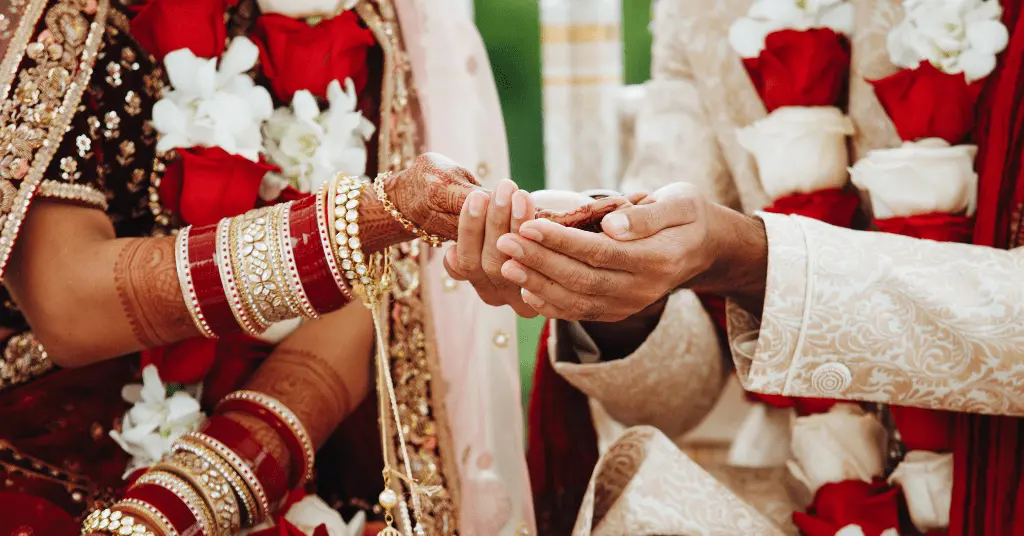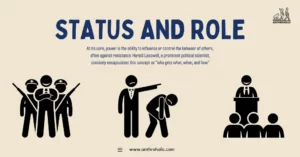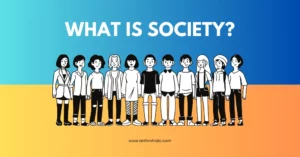AI Answer Evaluation Platform Live Now. Try Free Answer Evaluation Now
Marriage Exchanges
One of the primary characteristics of marriage is the exchange of products and services before, or after the ceremony [5].The term marriage exchanges can be used to denote the payment of cash, gifts, or other valuables, in exchange for a bride or groom, or the exchange of women during a marital union. “Marriage exchange” can be interpreted in two ways: “the flow of unions between exchanging social units” and “transactions associated with marriage” (eg. bridewealth) [15]. Thus these exchanges can take the form of bride price, bridewealth, brideservice, dowry, or exchange marriages.

Bridewealth
Bridewealth is the exchange of commodities, money, and other valuables during a marriage [3]. Anthropologist Roger M. Keesing defines bridewealth as ‘marriage payments from the kin of the husband to the kin of the bride’ [14]. Bridewealth is a characteristic of the patrilineal descent system, in which a person’s ancestry is determined through his or her father or male line. Through its contribution, the bride’s husband’s kin gains the right to her fertility and her offspring.
- The only way to get married in the Gusii tribe is to pay the bridewealth, which is “livestock and money.” In this society, for the marriage to receive a “social and legal sanction,” bridewealths must be paid. The establishment of kinship ties between sons and daughters is facilitated by bridewealth. The bridewealth of the sister is advantageous to brothers because they can use it in their own marriage to secure brides [12].
- Among the Nuer of South Sudan, typically, the bridewealth is paid with livestock. It is split between the bride’s parents and ii) “in fixed proportions” between three families: a) the bride’s kin b) the bride’s father’s kin and c) the bride’s mother’s kin. It suggests the importance of bridewealth to the bride and groom’s extended kin [12].
Brideservice
In some societies, the groom serves the kin of his bride, to obtain the rights to remove her from her natal home. In such societies, men are required to perform services in exchange for the “bestowal” of a woman in marriage [6]. In essence, both “bridewealth” and “brideservice” are regarded as payment for removing the bride from her residence [10].
- When a marriage is planned, the groom works for his future in-laws among the North Alaskan Eskimo. He only needs to catch a seal for them to complete this obligation. The marriage can be completed at any moment while he is in service [8].
- In a western Tamang community in Nepal, known as Timling, “wife-receivers” (grooms) are obligated to provide labor and services during peak seasons, or more specifically during funeral ceremonies of their bride’s kin. This labor includes cutting up wood, and other agricultural and pastoral tasks [9].
Brideprice
As discussed above, bridewealth is a type of wealth that is exchanged for the right to a bride’s wealth-attribute. “Brideprice arises when marriage payments are done by the transfer of the product of work rather than by a sacrifice of wealth-accumulation” [2]. When the bride lacks a specific wealth-attribute, the marriage payment will be a “product of work” or labor, rather than wealth. This is also known as bride price and groom price. In other cases, since the poor lack wealth-assets, they may sometimes decide to make the marriage payment with “labor” or skip such payments completely [2]. According to anthropologist, G.P. Murdock, brideprice occurs in about two-thirds of societies [1].
- Some instances of bride price can be seen in the ancient Egyptian, Mesopotamian, Hebrew, Aztec, and Inca civilizations, where brideprice was required [13].
- The German tribes of 2000 BCE required brideprice to give legal status to a marriage [1].
Dowry
Dowry is the ‘flow of goods to the bride from her family’, during a marriage. Dowry is held within a kinship because it is intended to accompany the bride into marriage [12]. It is defined as a sort of inheritance or a gift/payment to the bride or the new conjugal unit. There are primarily two opposing points of view: i) dowry is given as a “pre-mortem” gift to daughters who might not be able to receive parental property legally or culturally. The price model, on the other hand, ii) sees dowry as a financial gift to secure a superior match [5]. The majority of research studies have viewed dowry as a one-sided or direct transfer from the bride’s family to the groom’s [5]. Bell Duran argues that dowry is a payment as it always involves the transfer of wealth-assets to the kin of the groom [2]. Cultural differences affect dowry, but generally speaking, “large dowries are found where there is community-wide segregation by wealth, and small or no dowries are found where this feature is absent.” Societies that practice the dowry system are typically classified as patriarchal, patrilineal, and endogamous [12].
- Kaihsienkung village in China is an economically flourishing society that practices agriculture but has some industries as well. Dowry is a prevalent marriage custom in this primarily patrilineal and patrilocal society. Here, the bride is in charge of furnishing the home, while the groom is in charge of supplying housing. She may finance this with either the dowry or the money known as a “li-jin” that her new husband gave her. Because there are so few girls in the community, girls are highly treasured by their parents, and they are presented with lavish dowries [12].
- Transfers made between the families participating at the time of the marriage are among the characteristics that define marriages in the Indian subcontinent. These exchanges of cash or commodities can occur both ways, from the bride’s family to the groom’s, or the other way around. The first is referred to as dowry [5]. Despite being outlawed in 1961, dowry is still used in many parts of India today. In India, it has negative impacts on women’s lives, including infanticide, bride burning, and dowry death. When a dowry is not given to the groom’s family on time, the latter two extreme instances are more frequent [12].
Exchange Marriages/Sister Exchange
“The Elementary Structures of Kinship” by C. Lévi-Strauss, brought the idea of “exchange” to the study of marriage, and had a significant impact on anthropology as well as other academic disciplines [16]. It brought the idea of alliance theory which is also known as the general theory of exchange. According to the theory, an immediate kin of a man is not eligible to become his bride; instead, he must give her in marriage to another man. For example, in Melanesia, the exchange of wives is also associated with the principle of prohibition of cousins [15]. This ban on incest is what inspired exogamy among human communities. This taboo on incest procedure, in which a sister or daughter is sent to a separate family, starts a circle of exchange between women. According to Lévi-Strauss, marriage is thus mainly a procedure of exchange (between men or between members of different domestic groups) [7].
- The Jaiswar community are inhabitants of the Rai Bareilly district of Uttar Pradesh, India [11]. In this community, a type of marriage practice exists, which is called badli, or the exchange of brides. Since time immemorial, “badli” (exchange) have been common marriage customs as Jaiswars considered them to be the only acceptable type of marriage. In this particular custom, a daughter was exchanged for a bride within the same community. The exchange, though, was not just limited to daughters; it could also be made in return cash. Therefore there are two distinct sets of exchange: i) the exchange of a daughter for a bride and ii) the exchange of cash for a bride. This custom is based on whether a daughter or other female cousin(eg. niece) is available for exchange. In the second form of exchange, where a daughter is not available, a sum of money is given in exchange for a bride [4].
- The royal family of Liao, China had a system of exchange marriage where the royal men took wives from the Hsiao clan. The royal women also married men from the Hsiao clan. Notable instances of exchange marriage were i) Yeh-lü A- pao-chi (T’ai-tsu), the dynastic founder, wed Empress Ch’un-ch’in of the Hsiao clan in the latter part of the 890s and ii) Shih-lu, the younger sibling of Ch’un-ch’in, wed Chih-ku, the daughter of T’ai-tsu. Such exchange marriages did not simply signify “give and take” but followed a particular pattern of exchange where the husband gave his daughter to his wife’s brother in exchange for taking a woman in marriage. This exchange-marriage pattern between the Yeh-lü and Hsiao clans was repeated throughout the Liao reign [16].
- The royal family of the Mongol Empire, represented by Činggis Qan and his family, practiced intermarriage with a significant number of tribes. In particular, they practiced reciprocal marriage with the Qonggirad and Oyirad tribes, exchanging their women in marriage with one another over many generations. A notable instance is: Činggis Qan’s chief wife Börte was exchanged with his daughter. His daughter was given to Börte’s younger brother’s son. This marriage was an exchange marriage that followed a pattern of give-and-take exchange where the husband, in return for having taken a woman in marriage, gave his daughter to his wife’s brother’s son. This pattern of exchange-marriage recurs frequently in Činggis Qan’s family’s marriage relationships with the Qing Girard tribe, their second-most significant affinal cousins, as well as in their marriage relationships with the Oyirad tribe [16].
References
[1] Anderson, Siwan. “The Economics of Dowry and Brideprice.” The Journal of Economic Perspectives, vol. 21, no. 4, 2007, pp. 151–74. JSTOR, http://www.jstor.org/stable/30033756. Accessed 27 Feb. 2023.
[2] Bell, D. (2008b). Marriage Payments: a fundamental reconsideration. Structure and Dynamics. https://doi.org/10.5070/sd931003294
[3] Bossen, Laurel. “Toward a Theory of Marriage: The Economic Anthropology of Marriage Transactions.” Ethnology, vol. 27, no. 2, 1988, pp. 127–44. JSTOR, https://doi.org/10.2307/3773624. Accessed 21 Feb. 2023.
[4] Chaudhari, A., & Yadav. (n.d.). CHANGING MARRIAGE PRACTICES A STUDY OF MARRIAGE PATTERN AMONGST THE JAISWARS.
[5] Chowdhury, Afra Rahman. “Money and Marriage: The Practice of Dowry and Brideprice in Rural India.” (2010).
[6] Dean, Bartholomew. “Forbidden Fruit: Infidelity, Affinity and Brideservice Among the Urarina of Peruvian Amazonia.” The Journal of the Royal Anthropological Institute, vol. 1, no. 1, 1995, pp. 87–110. JSTOR, https://doi.org/10.2307/3034230. Accessed 27 Feb. 2023.
[7] DESCENT AND ALLIANCE THEORIES. (n.d.). EGyan Kosh. https://egyankosh.ac.in/bitstream/123456789/41275/1/Unit-2.pdf
[8] Economic Aspects of Marriage. (n.d.). https://revelpreview.pearson.com/epubs/pearson_ember_a/OPS/xhtml/ch19_sec_11.xhtml
[9] Fricke, T., Dahal, D. R., & Lama, R. Y. (1996). Family Transitions and the Practice of Brideservice in the Upper Ankhu Khola: A Tamang Case. CNAS Journal, 23(2). https://himalaya.socanth.cam.ac.uk/collections/journals/contributions/pdf/CNAS_23_02_02.pdf
[10] Hugh-Jones, Stephen. “Bride-Service and the Absent Gift.” The Journal of the Royal Anthropological Institute, vol. 19, no. 2, 2013, pp. 356–77. JSTOR, http://www.jstor.org/stable/42001590. Accessed 27 Feb. 2023.
[11] Jaiswal Samaj. (n.d.). http://www.jaiswalsamajvizag.com/about.html
[12] Jones, Caroline, “Women’s Worth: A Western Misconception” (2011). Nebraska Anthropologist. 162. http://digitalcommons.unl.edu/nebanthro/162
[13] Kapoor, Kumar. et al., “Anthropology Social-Cultural Anthropology.” E Pathshala, https://epgp.inflibnet.ac.in/epgpdata/uploads/epgp_content/anthropology/02._social_cultural_anthropology_/13._marriage_rules_marriage_payment/et/7130_et_et_13.pdf
[14] Keesing, R. M. (1976). Cultural Anthropology: A Contemporary Perspective. Holt, Rinehart, and Winston.
[15] Strathern, Marilyn. “Marriage Exchanges: A Melanesian Comment.” Annual Review of Anthropology, vol. 13, 1984, pp. 41–73. JSTOR, http://www.jstor.org/stable/2155661. Accessed 27 Feb. 2023.
[16] Uno, Nobuhiro. “EXCHANGE-MARRIAGE IN THE ROYAL FAMILIES OF NOMADIC STATES. In: V. Rybatzki Et Al. (Eds.), The Early Mongols: Language, Culture and History (Indiana University Uralic and Altaic Series Vol.173), 2009, 175-182.” The Early Mongols: Language, Culture and History (2009): n. pag. Print.




